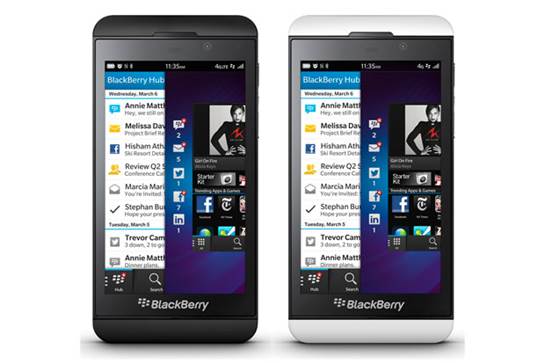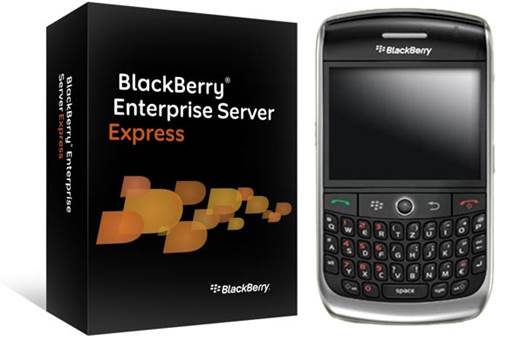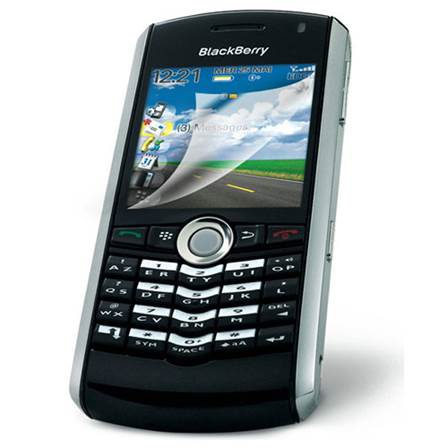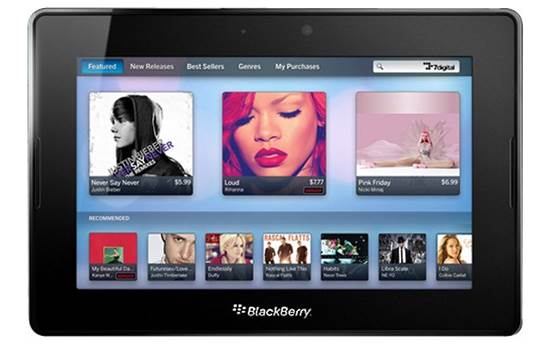In the technology community very few
companies draw the kind of rabid following and fanboy-like behavior as Apple
does. Once upon a time, BlackBerry (or RIM, as it was then known) was that
company.
In the years before Apple’s iPhone launch
BlackBerry was synonymous with smartphones as a whole, having produced the
first two-way pager in 1999, and the first ‘push email’ smartphone in the early
2000s.
The company has not released a new
generation of smartphones since its purchase of QNX in 2010, which was supposed
to launch the new BB1O operating system. Three years later and after endless
delays and failed products, January 30 saw the launch of the BlackBerry ZiO,
its first BB1O smartphone (see our review on page 44). Will this see a return
to form for the struggling firm? Unlikely, but it could still carve itself out
a niche in the business market, which is struggling to adapt to the consumer
focused Samsung and Apple smartphones which dominate the 2013 marketplace.

A
last chance at redemption?
In the last two years we have seen long
standing CEOs Jim Balsillie and Mike Lazaridis kicked out of the company, macho
product launches mocking the superior competition (see the BlackBerry
Playbook), drunken senior executives punching an air hostess on a flight to
China (once stopped by other passengers, they even tried to chew through their
restraints), attempts to sell the company and endless product delays that have
pushed the temperament of the most die-hard fans.
So how did a company that once dominated
the market so thoroughly end up the butt of so many jokes?
The answer is simple - Apple. Like Nokia,
Motorola and the other giants of the pre-iPhone generation, none of these
companies took the Apple iPhone threat seriously. BlackBerry’s senior
management, with a dose of hubris, not only disregarded Apple’s entrance, they
spent many years mocking Apple’s products, before producing their own knock-off
variants, launched with the same arrogant contempt as before. Being arrogant
and obnoxious when you’re on top is bearable; when you’ve fallen off the top,
it just looks idiotic.
These problems were compounded by the fact
that, like Apple, BlackBerry develops its own hardware and software eco-system.
This worked fine for most of the 2000s, where the feature set on most phones
was simple. When the market became more complicated (especially with the advent
of Apple’s App Store in 2008), software arguably became more important than
hardware. While most other handset manufacturers jumped on the Android
bandwagon rather than risk developing their own OS’s, BlackBerry bought QNX and
attempted to build its own OS from scratch. Not only is this a difficult
undertaking (previous versions of BlackBerry OS were usually small, incremental
updates going back to 2001), but no one (even Steve Jobs) foresaw the rise of
the App Store marketplace as a key selling point. Apple and Google dominate
this space, and as we have seen with Windows Phone, simply developing an OS
isn’t the endgame anymore - it’s attracting developers to create the software
that runs on your OS. BlackBerry has been absent for so long, it’s hard to see
how they can draw developers in - even though its new hardware looks
impressive.
The key products that made - and broke - an empire
BlackBerry Enterprise Server

BlackBerry
Enterprise Server
While a nerdy sounding mouthful, this
server was key to BlackBerry’s dominance in the 90s, and its continued
longevity in the public service worldwide. This synchronizes email across the
entire network and allowed for the development of ‘push email’ – i.e. your
phone beeping and telling you an email had arrived, in real time (rather than
you having to click refresh). Because it was centralized and encrypted, it also
meant that BES email was very, very secure - unhackable, as BlackBerry boasted.
This made it the number one choice for corporations and particularly world
Governments, and most of its rivals, which were still using older email servers
fell by the wayside. This is, arguably, the only reason why Governments are
still using BlackBerry products. This is also unfortunately one of the reasons
when the server fails, as it did in October 2011, a centralized model is not
ideal - the entire network went down without any backup.
BlackBerry Messenger
Launched in 2006, this was so far ahead of
its time, that even Apple didn’t launch its own iMessage until 2011. BlackBerry
essentially foresaw the end of SMS messaging, instead allowing users to send
messages to other BlackBerry users over the internet, instead of as part of a
text and calling plan. Texts, effectively, were made free of cost. Especially
in the UK, this has singlehandedly kept BlackBerrys in the hands of the
nation’s youth - why pay extortionate rates for phone calls and SMS text
messages, when you can load up a BlackBerry Bold with prepay cash and text for
free?
BlackBerry Pearl 8100
This was BlackBerry’s first attempt at a
consumer phone and it was a rousing success in 2006. It had an HTML web
browser, push email capabilities, a then huge 1.33MP camera and a media player
that supported video and music playing. Its color screen allowed consumers to
personalize the device as they saw fit. Its successors added GPS, Wi-Fi and
expandable SD memory cards.
BlackBerry 8800

BlackBerry’s
first attempt at a consumer phone
This was effectively the first of the
BlackBerry smartphones as we still know them today. Launched in February 2007,
it featured a full QWERTY keyboard, and introduced the famed trackball which
allowed the device to be used more like a computer. Until the iPhone launched
at year end, this was the best online experience on a handset. The screen was a
whopping 320x240 pixels with 65,000 colors which meant it was (then) as good as
it got for movie and picture viewing, its processor and battery life were also
excellent.
BlackBerry Playbook

Like
most other tablets launching at the time, it suffered from a lack of apps.
This for many came to symbolize the end of
what BlackBerry used to stand for. Released in April 2011 (a year after the
Wad), it was subject to a whole host of embarrassing incidents. From the launch
where Balsillie mocked the iPad, through to the recalls due to software errors.
While technologically the device was actually pretty impressive, its software
was unfinished - and didn’t allow users to check their emails unless it was
physically tethered to a BlackBerry smartphone - a massive inconvenience for
users. Like most other tablets launching at the time, it suffered from a lack
of apps.